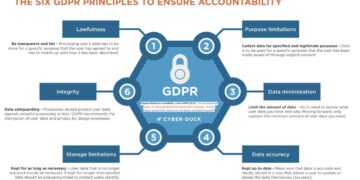In the dynamic arena of global finance, few sectors generate as much fervent excitement and strategic reallocation of capital as venture capital. Within this high-stakes environment, the convergence of venture capital and Artificial Intelligence (AI) represents a monumental shift, fundamentally reshaping investment landscapes, driving unprecedented innovation, and dictating the trajectory of future economies. AI is no longer a futuristic concept but a tangible force, permeating every industry from healthcare and finance to logistics and creative arts. For investors, entrepreneurs, and anyone tracking the pulse of technological advancement, understanding how venture capital firms are navigating, funding, and ultimately catalyzing the AI revolution is crucial. This deep dive will explore the motivations behind VC’s intense focus on AI, identify key investment trends, pinpoint burgeoning opportunities, and shed light on the challenges and strategic considerations for securing funding in this hyper-competitive, high-growth sector. The insights presented here aim to be invaluable for those seeking to maximize their digital presence and attract high Google AdSense revenue through timely, comprehensive content on this vital economic intersection.
Why Venture Capital Gravitates Towards AI
The gravitation of venture capital towards AI is not a mere coincidence; it’s a calculated response to a confluence of compelling factors that position AI as the most transformative technology of our era. VCs, by nature, seek out groundbreaking innovations with exponential growth potential, and AI fits this description perfectly.
The core reasons for this intense focus include:
- Massive Market Potential: AI’s applicability is virtually limitless, spanning every industry. This broad utility means AI solutions can tap into colossal existing markets and create entirely new ones, promising unprecedented revenue streams and market dominance for successful ventures. From automating routine tasks to powering complex scientific discovery, AI’s market footprint is expanding exponentially.
- Disruptive Innovation: AI possesses the unparalleled ability to disrupt established industries and business models. It can optimize efficiency, reduce costs, enhance decision-making, and create superior products and services. VCs are inherently drawn to technologies that can unseat incumbents and redefine competitive landscapes, and AI is the ultimate disruptor.
- Scalability and Network Effects: Many AI-driven products and platforms exhibit strong scalability and network effects. As more users engage, the AI models improve (through more data), and the value proposition strengthens, creating powerful moats against competition. VCs favor businesses that can grow rapidly without proportional increases in cost.
- Data as the New Oil: The proliferation of data across all facets of life provides the essential fuel for AI’s development. VCs recognize that companies capable of leveraging vast datasets through sophisticated AI algorithms can unlock profound insights and deliver immense value, translating data into actionable intelligence.
- Talent Acquisition and Retention: Investing in AI startups often means investing in top-tier technical talent—data scientists, machine learning engineers, and AI researchers. VCs know that access to and retention of this specialized human capital are critical competitive advantages. Funding these teams secures access to the intellectual firepower driving future innovation.
- Defensibility and Moats: Well-trained AI models, especially those built on proprietary datasets or unique algorithmic approaches, can create significant competitive moats. This “data moat” or “algorithm moat” makes it harder for competitors to replicate success, offering long-term defensibility, which is highly attractive to venture capitalists.
Key Investment Trends in AI Venture Capital
The landscape of AI venture capital is dynamic, with distinct trends emerging as the technology matures and its applications become more refined. VCs are not just throwing money at any AI idea; they’re strategically backing areas with the clearest paths to commercial viability and significant impact.
A. Foundational AI and Infrastructure
Investment in the underlying technologies that power AI remains a critical trend. This includes companies building the “picks and shovels” for the AI gold rush.
- AI Chips and Hardware: The demand for specialized processors (GPUs, TPUs, NPUs, ASICs) optimized for AI workloads is soaring. These chips offer the computational power necessary for training and deploying complex AI models efficiently. VCs are funding startups developing novel chip architectures that promise higher performance and lower energy consumption.
- MLOps (Machine Learning Operations): As AI moves from research labs to production environments, the need for robust MLOps platforms has become paramount. These tools help manage the entire AI lifecycle, from data preparation and model training to deployment, monitoring, and governance. VCs see this as essential infrastructure for scaling AI.
- Data Labeling and Annotation: High-quality, labeled data is the lifeblood of supervised learning models. Startups providing efficient, scalable, and accurate data labeling services are vital. This includes leveraging human-in-the-loop systems and semi-automated annotation tools.
- AI Development Platforms: Companies offering end-to-end platforms that simplify AI development, allowing businesses without deep AI expertise to build and deploy AI solutions more easily. This democratizes AI access.
- Edge AI: Investing in technologies that allow AI models to run on edge devices (e.g., sensors, cameras, smart appliances) rather than solely in the cloud. This reduces latency, enhances privacy, and allows for real-time decision-making in diverse applications like autonomous vehicles and smart factories.
B. Generative AI and Creative Tools
The emergence of Generative AI has arguably been the most exciting and disruptive trend in recent years, attracting colossal investment.
- Text-to-Image/Video/Audio Generation: Startups developing models that can create realistic or stylized content from text prompts are highly sought after. This has vast implications for media, entertainment, advertising, and content creation.
- Code Generation and Auto-completion: AI tools that assist developers by generating code, suggesting fixes, or translating between programming languages. This boosts developer productivity significantly.
- Content Creation and Marketing: AI-powered platforms that generate marketing copy, social media content, ad creatives, or personalized campaigns. This automates and optimizes content pipelines for businesses.
- AI-Powered Design Tools: Tools that assist designers in generating layout variations, creating unique patterns, or optimizing visual elements based on user preferences.
- Drug Discovery and Material Science: Generative AI is being used to design novel molecules, proteins, and materials, accelerating R&D in pharmaceuticals and advanced manufacturing.
C. Vertical AI Applications
VCs are increasingly looking beyond horizontal AI platforms to specialized AI solutions tailored for specific industries, where AI can solve deep, industry-specific problems.
- Healthcare AI: This encompasses AI for drug discovery, personalized medicine, medical imaging analysis (e.g., diagnosing diseases from scans), predictive analytics for patient outcomes, and administrative efficiency in hospitals.
- Fintech AI: AI applications for fraud detection, algorithmic trading, personalized financial advice, credit scoring, and cybersecurity in financial services.
- Logistics and Supply Chain AI: AI for optimizing routes, managing inventory, predicting demand, enhancing warehouse automation, and improving supply chain resilience.
- Agriculture AI (AgriTech): AI for precision farming, crop yield prediction, pest detection, automated harvesting, and livestock monitoring.
- Retail AI: AI for personalized shopping experiences, demand forecasting, inventory optimization, customer service chatbots, and visual merchandising analytics.
- EdTech AI: AI for personalized learning paths, intelligent tutoring systems, automated grading, and student performance prediction.
D. Responsible AI and Governance
As AI becomes more pervasive, the need for responsible and ethical AI development is growing, creating a new area of investment.
- AI Ethics and Fairness Tools: Companies developing solutions to detect and mitigate bias in AI models, ensuring fair and equitable outcomes.
- AI Explainability (XAI): Tools that help users understand how AI models make decisions, crucial for regulatory compliance and trust, especially in critical applications like healthcare or finance.
- AI Security: Solutions designed to protect AI models from adversarial attacks, data poisoning, and other security vulnerabilities.
- AI Governance and Compliance Platforms: Software that helps organizations manage AI risks, comply with emerging AI regulations, and ensure accountability.
The VC Investment Process for AI Startups

Securing venture capital for an AI startup is a highly competitive journey. VCs follow a rigorous due diligence process, scrutinizing various aspects beyond just the core technology.
A. The Problem and Solution
VCs first seek to understand the fundamental problem your AI solution addresses. Is it a real pain point? Is the market large enough? How does your AI uniquely solve it, offering a significant improvement over existing methods or creating an entirely new capability? They look for clear value propositions.
B. The Team
The strength and expertise of the founding team are paramount, especially in AI. VCs assess:
- Technical Acumen: Does the team possess deep expertise in AI, machine learning, data science, and relevant engineering disciplines?
- Domain Knowledge: Do they understand the specific industry or vertical they’re targeting?
- Execution Capability: Have they successfully built and scaled products before?
- Coachability and Vision: Are they open to feedback but also possess a clear, compelling vision for the future?
C. Technology and Intellectual Property (IP)
For AI startups, the proprietary nature of the technology is a key differentiator. VCs evaluate:
- Novelty and Defensibility: Is the AI technology truly innovative? Does it have a unique algorithm, a proprietary dataset, or a novel application that creates a competitive moat?
- Scalability of AI Models: Can the AI models scale efficiently with growing data and user bases?
- Data Strategy: How does the company acquire, manage, and leverage data? Is there a proprietary data advantage?
- Roadmap: What’s the plan for future technological development and how will it maintain its edge?
D. Market Opportunity and Business Model
VCs look for large, rapidly growing markets where the AI solution can achieve significant penetration.
- Market Size (TAM, SAM, SOM): Total Addressable Market, Serviceable Available Market, Serviceable Obtainable Market. VCs want to see a multi-billion dollar opportunity.
- Go-to-Market Strategy: How will the company acquire customers? What are the sales and marketing channels?
- Business Model: How will the company generate revenue? Is it SaaS, subscription, usage-based, or something else? Is it scalable and profitable?
- Competitive Landscape: Who are the competitors, and what is your sustainable competitive advantage?
E. Traction and Metrics
Proof of concept and early traction are critical. This can include:
- User Growth: Number of active users, user engagement.
- Revenue Growth: Early sales, recurring revenue.
- Pilot Programs: Successful implementations with key customers.
- Product-Market Fit: Evidence that the product resonates with its target audience and solves their problems effectively.
- Unit Economics: Cost of customer acquisition (CAC) vs. customer lifetime value (LTV).
F. Financials and Fundraising Strategy
VCs assess the financial health and fundraising plan.
- Financial Projections: Realistic and well-substantiated revenue and expenditure forecasts.
- Burn Rate: How quickly the company is spending its capital.
- Use of Funds: A clear plan for how the investment will be utilized to achieve milestones.
- Valuation Expectations: Realistic expectations for the company’s valuation.
Challenges and Considerations for AI Startups Seeking VC

While AI venture capital presents immense opportunities, startups in this space face unique challenges.
A. High Barrier to Entry for Deep Tech
Developing truly groundbreaking AI often requires extensive R&D, specialized talent, and significant computational resources, leading to higher initial costs and longer development cycles before commercialization.
B. Talent Scarcity and Competition
The demand for top AI talent far outstrips supply, leading to intense competition for engineers and researchers, often accompanied by high salary expectations.
C. Data Acquisition and Quality
Acquiring, cleaning, and labeling large, high-quality datasets can be a monumental task, especially for niche applications. Poor data quality can severely impact AI model performance.
D. Ethical Concerns and Regulation
Concerns around AI bias, privacy, explainability, and job displacement are growing. Startups must navigate a complex ethical landscape and anticipate evolving regulatory frameworks, which can affect product design and market adoption.
E. Long Sales Cycles for Enterprise AI
Selling complex AI solutions to large enterprises often involves lengthy sales cycles, requiring significant capital to sustain operations until substantial revenue is generated.
F. Proving ROI
Demonstrating a clear, measurable return on investment (ROI) for AI solutions can be challenging, particularly in early stages, as benefits might be indirect or long-term.
G. “AI Washing” and Investor Skepticism
The hype surrounding AI has led to some companies overstating their AI capabilities (“AI washing”), making VCs more discerning and skeptical, requiring genuine innovation and clear differentiation.
The Future Trajectory of AI in Venture Capital
The symbiotic relationship between venture capital and AI is set to deepen and evolve, driving the next wave of technological and economic transformation.
A. Specialization and Niche Focus
As AI matures, VCs will likely become even more specialized, focusing on particular AI sub-fields (e.g., reinforcement learning, causal AI) or specific vertical applications where they can leverage deep domain expertise.
B. Greater Emphasis on Ethical and Explainable AI
With increasing regulatory scrutiny and public awareness, VCs will place a stronger emphasis on startups building AI responsibly, with built-in fairness, transparency, and explainability from the ground up. This will become a competitive differentiator.
C. Rise of AI-Native Business Models
Beyond simply integrating AI into existing businesses, VCs will seek out companies whose entire business model is fundamentally re-architected around AI, where AI isn’t just a feature but the core product or service delivery mechanism.
D. Focus on AI for Sustainability and Social Impact
Investment will increasingly flow into AI solutions addressing global challenges like climate change, resource management, healthcare accessibility, and education, driven by both societal needs and market opportunities.
E. Blurring Lines Between AI and Other Deep Tech
The convergence of AI with other deep technologies like quantum computing, biotechnology, and advanced robotics will unlock unprecedented capabilities, creating new areas for significant venture investment.
F. Geographic Diversification of AI Investment
While Silicon Valley remains a hub, AI innovation and VC investment are becoming more geographically diverse, with emerging ecosystems in Europe, Asia, and other regions gaining prominence.
Investing in Tomorrow’s Intelligence
The intersection of venture capital and Artificial Intelligence represents arguably the most exciting frontier in modern finance and technology. VCs are not merely funding startups; they are actively shaping the future, betting on the ingenuity of founders and the transformative power of algorithms to solve complex problems and create unimaginable value. For entrepreneurs, understanding the intricate dynamics of this investment landscape, from identifying genuine market needs to building defensible technology and articulating a clear path to scale, is paramount. The journey to secure VC funding in AI is rigorous, but for those who succeed, the rewards can be monumental, not just in financial terms but in their ability to drive real-world impact. As AI continues its relentless march towards pervasive integration, the strategic deployment of venture capital will remain the crucial accelerant, powering the intelligence that defines tomorrow. For content creators, this confluence offers a continuous stream of compelling narratives, ensuring sustained interest and high engagement.







